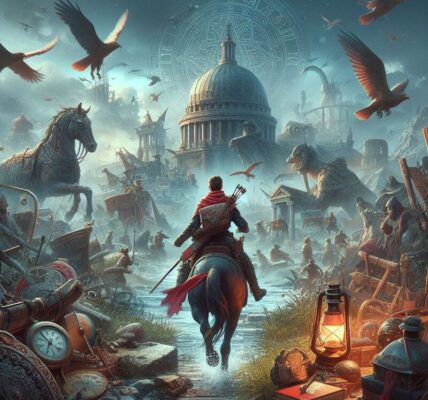One of the most enchanting aspects of role-playing games (RPGs) is the opportunity they provide to immerse yourself in rich and vibrant game worlds. From sprawling fantasy realms filled with magic and monsters to dystopian futures teeming with technology and intrigue, RPG worlds offer endless opportunities for exploration, discovery, and adventure. In this exploration of “Realm Exploration,” we delve into the art of immersing yourself in RPG worlds, uncovering the secrets of world-building, environmental storytelling, and player agency that bring these fantastical realms to life.

Part 1: World-building and Lore
Crafting the Foundation
At the heart of every immersive RPG world lies a foundation of rich lore and world-building that provides context and depth to the player’s journey. World-building involves creating a detailed and cohesive setting for the game, including its geography, history, cultures, factions, and mythology.
Developing a compelling backstory and lore for your RPG world can help establish a sense of immersion and believability for players. Consider the history of your world, including major events, conflicts, and civilizations that have shaped its present-day landscape. Develop unique cultures, religions, and traditions that add depth and diversity to your world, and incorporate elements of mythology and folklore that capture the imagination of players.
By investing time and effort into world-building and lore development, you can create a rich and immersive RPG world that feels alive and vibrant, drawing players into its depths and sparking their curiosity to explore and uncover its secrets.
Part 2: Environmental Storytelling
Uncovering Hidden Narratives
Environmental storytelling is a powerful technique used in RPGs to convey narrative, mood, and atmosphere through the game world itself. By carefully designing environments, architecture, and landscapes, developers can communicate information, themes, and emotions to players without the need for explicit exposition or dialogue.
Pay attention to details such as environmental cues, set pieces, and visual storytelling techniques as you explore the game world. Notice how the architecture, lighting, and weather contribute to the mood and atmosphere of each location, and how environmental elements such as ruins, artifacts, and graffiti provide clues to the history and lore of the world.
Take the time to explore every corner of the game world, interact with objects, and observe your surroundings to uncover hidden narratives and lore snippets that add depth and context to your journey. By immersing yourself in the environmental storytelling of the game world, you can gain a deeper appreciation for its intricacies and secrets.
Part 3: Player Agency and Exploration
Forging Your Own Path
Player agency is a key aspect of immersion in RPG worlds, allowing players to make meaningful choices and shape the course of their own adventures. By giving players the freedom to explore, interact with NPCs, and make decisions that impact the world around them, RPGs empower players to become active participants in the storytelling process.
Embrace the spirit of exploration as you journey through the game world, seeking out hidden treasures, secret passages, and uncharted territories. Take the time to talk to NPCs, engage in side quests, and investigate points of interest to uncover new opportunities for adventure and discovery.
Exercise your agency by making decisions that reflect your character’s personality, motivations, and moral code. Whether choosing to ally with a faction, spare or kill a character, or resolve a conflict through diplomacy or combat, every decision you make has the potential to shape the outcome of your journey and the world around you.



